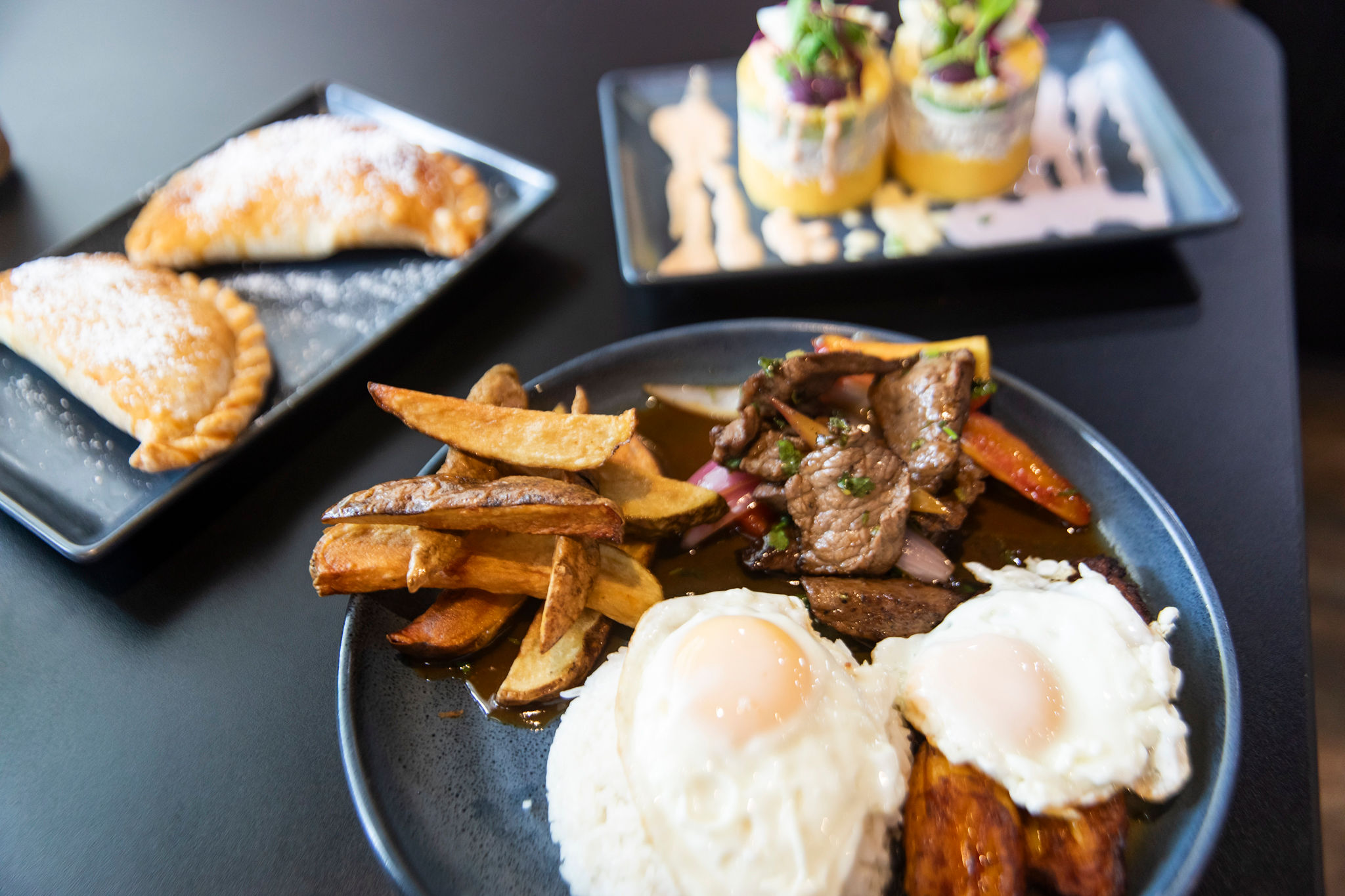
Authentic Peruvian cuisine arrives in Baton Rouge at new Brasas Peru
Charcoal chicken and pisco sours are among the hallmarks of Peruvian gastronomy, seen as one of the world’s most popular and diverse cuisines. Now Baton Rouge diners can sink their teeth into an all-Peruvian menu at the new Brasas Peru, the brainchild of Lima native Giannina Chavez, and her brother Renzo Ibanez and sister-in-law Carolina Ayala. Ibanez and Ayala are also proprietors of El Paso Mexican Grill in Lafayette. Brasas Peru opened in late June in the Beau De Chene Shopping Center on Perkins Road.
“Peruvian food is really popular right now, and we thought Baton Rouge was ready for it,” says Chavez, who runs the restaurant with Ayala. “We have a lot of different influences in our cooking, like Incan, Italian and Asian.”
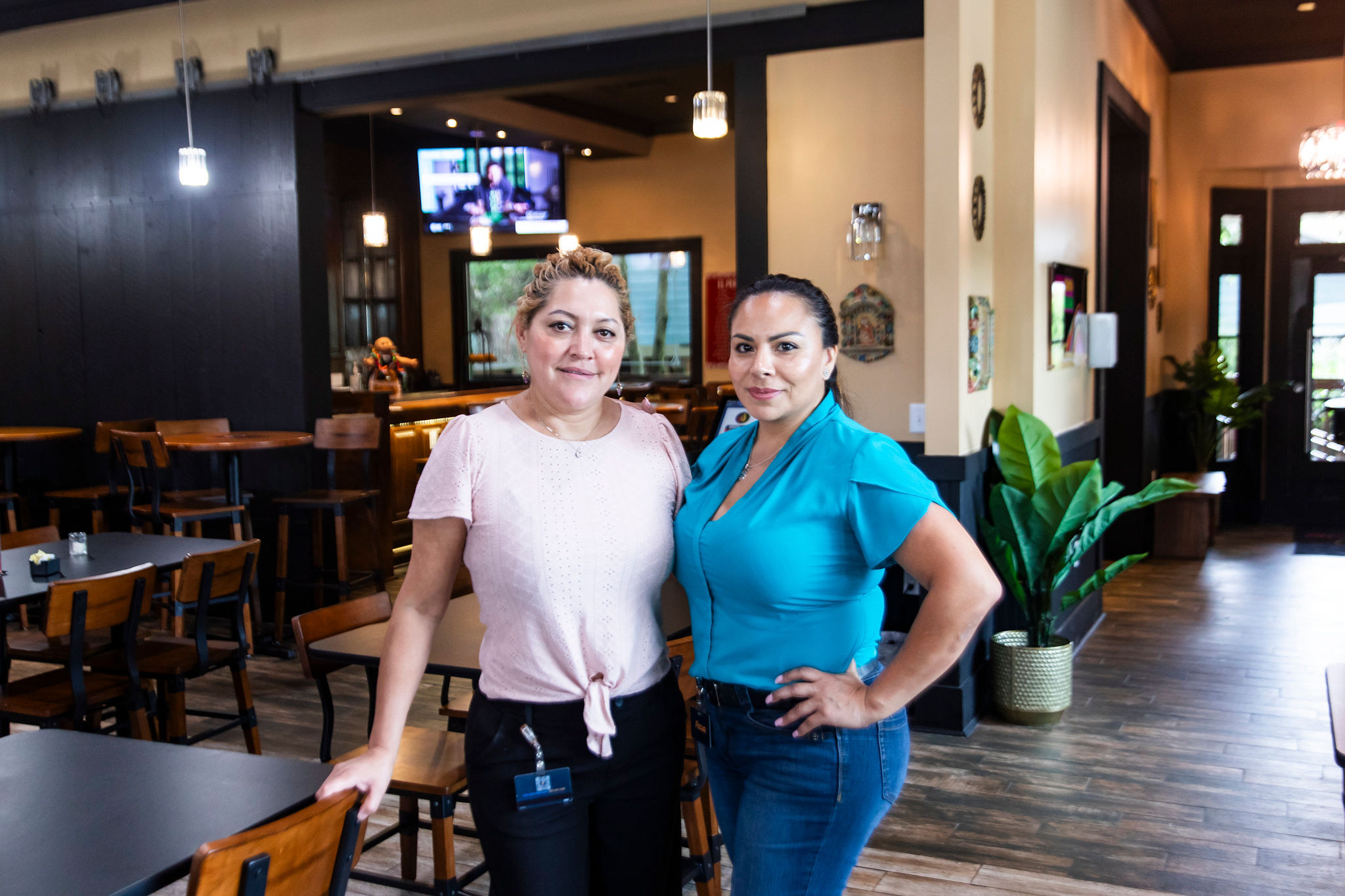
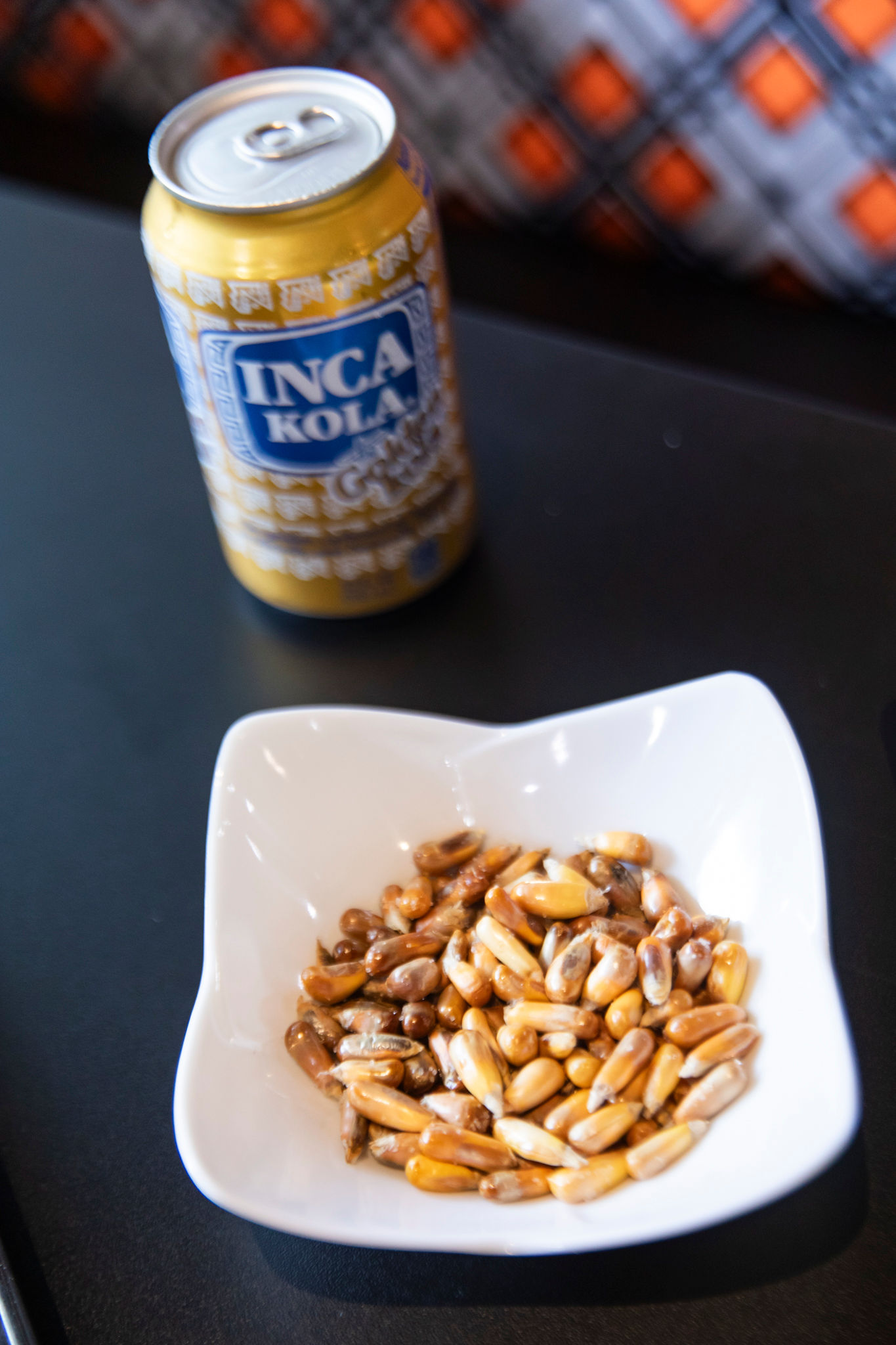
Indeed, Peru’s diverse foodways include a prevalence of corn, a crop originally grown by the Inca and seen in dishes like maize chulpe, a popular snack of roasted salted corn kernels that Brasas Peru serves as a complimentary starter. It’s also integrated as a textural note in the restaurant’s ceviche, a raw fish version that includes red onions, corn and sweet potato.
|
|
Chinese influences are also commonplace in Peruvian cuisine, the result of a migration wave of Chinese immigrants to Peru in the late 19th and early 20th centuries. That culinary fusion appears on Brasas Peru’s menu in the form of arroz chaufa, or fried rice, served with chicken, beef, shrimp or a combination of the three.
“Brasas” means embers in Spanish and refers to the cooking method deployed in so-called charcoal chicken, a signature Peruvian dish. Chavez says the restaurant uses a Peruvian rotisserie in which charcoal is loaded into a rear chamber. Executive chef Enrique Barua marinates whole chickens for two days in a spice blend that includes cumin and dried aji panca peppers, which impart slightly sweet and smoky notes.
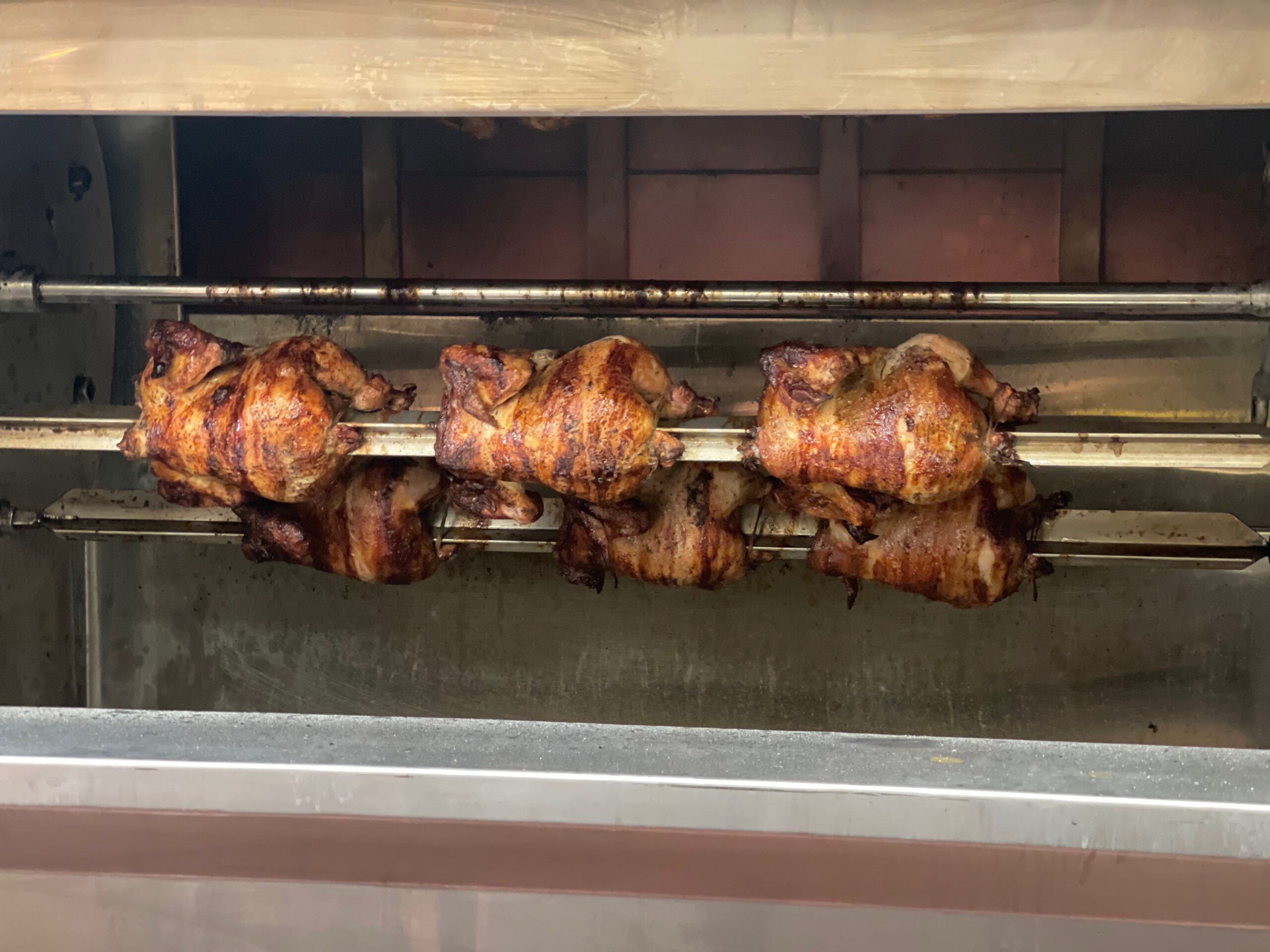
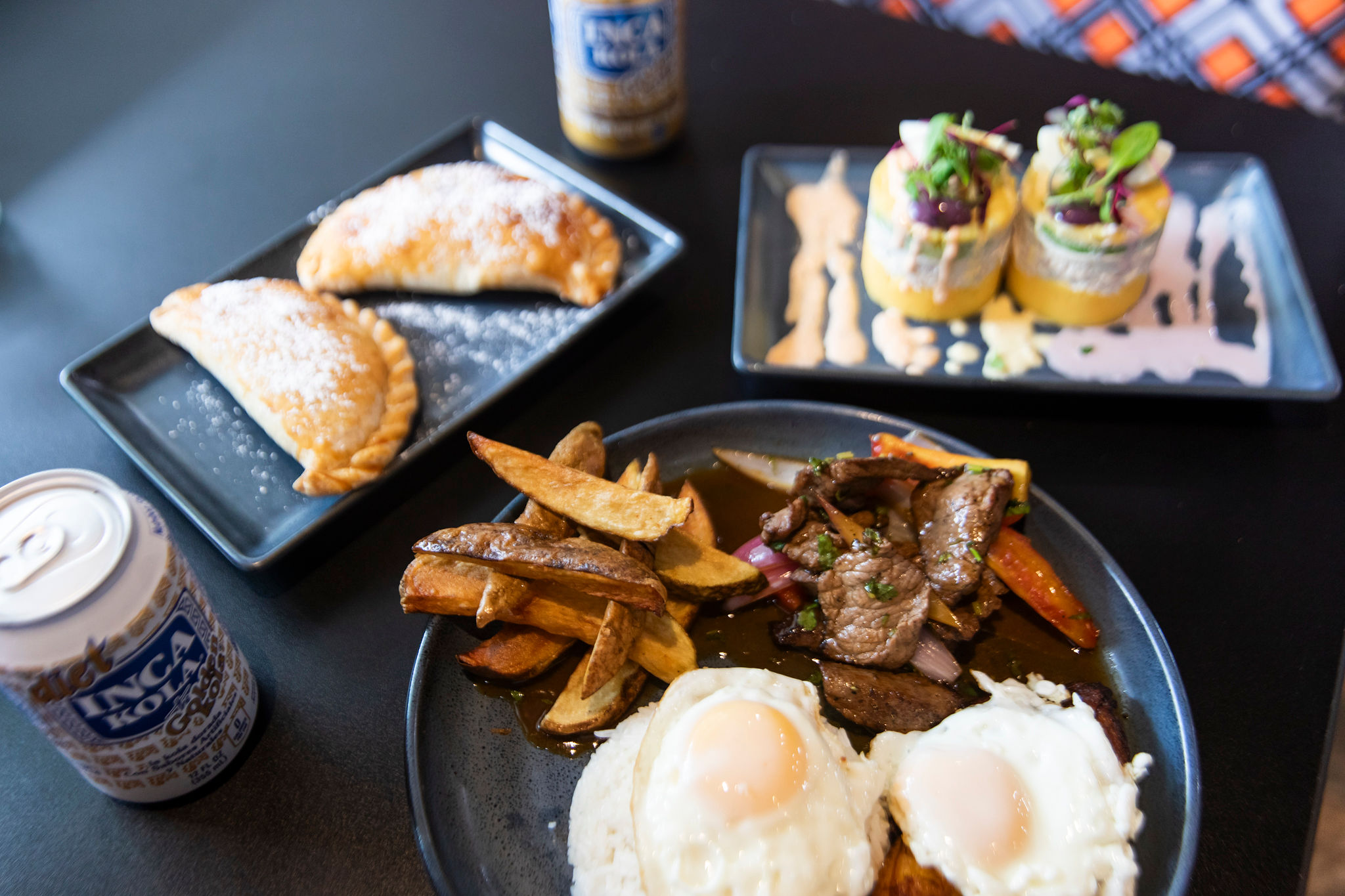
Since the restaurant opened three weeks ago, business has been robust, Chavez says.
“We’ve been excited,” she says. “We had a big groups of 10 and 20 come in on the Sunday of Fourth of July weekend, which we were not expecting.”
Fans of Peruvian food find a large menu with dishes like lomo saltado, skirt steak sautéed with tomato wedges, bell peppers and onions served with a dome of white rice, French fries and pan-fried plantains. Order it topped with fried eggs for extra richness. The caramelization on the plantains provides a sweet note against the plate’s sturdy flavors.

Chavez says Barua and his team prepare charcoal chicken daily until it runs out so that it’s as fresh as possible. They also make fresh pastry dough for homemade empanadas, one of the menu’s most popular starters, Chavez says. The large hand pies are stuffed with ground beef in a rich sauce studded with small dices of boiled egg. The empanadas feature a hint of sweetness.
A cold appetizer, causa rellena, is a traditional layered tower of pureed potatoes, chicken salad and avocado served on a plate drizzled with three different sauces: one made with black olives, one with aji chilis and the other, rocoto chilis. The restaurant also makes a creamy, spicy huacatay sauce prepared with pulverized fresh black mint. It’s great for dipping both proteins and French fries.
Another popular item is the papa rellena, a deep fried oblong fritter with a potato crust stuffed with a savory blend of ground beef, raisins, chopped egg and spices. It’s served with cold salad of radish, onions and tomato.

The restaurant is located in the building that last housed The Iron Fork. It’s the same space that has seen the opening—and rapid closure—of seven different concepts since 2010, when longtime tenant Calendar’s shut its doors. That said, Brasas Peru’s vibe feels light and cheery, with an energetic Latin music playlist, plenty of natural light and a wall that had previously separated the restaurant’s two main dining rooms now eliminated. Refreshed booths feature fabric in a geometric pattern of black, white and neon orange, a nod to fire-roasted chicken, Chavez says.
The separate bar near the restaurant’s entrance is open for seating, but not yet for booze. Brasas Peru is still waiting for its liquor license, after which it’ll sling pisco sours, the refreshing restorative made with Peruvian grape brandy, as well as wine, beer and other cocktails, Chavez says. In the meantime, wash your meal down with an authentic Peruvian soda.
The restaurant is open Monday through Thursday, 11 a.m. to 10 p.m.; Friday and Saturday, 11 a.m. to 11 p.m.; and Sunday, 11 a.m. to 9 p.m. For more information, visit Brasas Peru.
|
|
|

